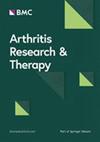Decoding the impact of exercise and αCGRP signaling on murine post-traumatic osteoarthritis progression
IF 4.6
2区 医学
Q1 Medicine
引用次数: 0
Abstract
Osteoarthritis (OA) is a chronic degenerative joint disease characterized by cartilage breakdown, subchondral bone remodeling, and inflammation. Mechanical stress, such as exercise, can influence OA progression, acting as either a therapeutic intervention or a risk factor depending on intensity. The sensory neuropeptide αCGRP plays a role in modulating cartilage, bone, and inflammatory responses, making it a potential mediator of exercise effects on OA. This study investigated the impact of αCGRP deficiency and exercise intensity on OA progression in a post-traumatic murine model. OA was induced in male αCGRP knockout (KO) and wild type (C57Bl/6J) mice via destabilization of the medial meniscus (DMM). Mice underwent moderate or intense treadmill exercise for up to 6 weeks (8 weeks post-surgery). Histological analyses were performed to assess cartilage degradation. Subchondral and metaphyseal bone morphology as well as cartilage stiffness were evaluated by nanoCT and atomic force microscopy (AFM), respectively. Serum inflammatory markers were analyzed using multiplex immunoassays. Serum levels of proinflammatory markers were elevated in αCGRP-deficient mice, particularly after intense exercise, independent of OA progression. DMM surgery induced significant cartilage degradation. Gross cartilage morphology was not influenced by exercise intensity or αCGRP deficiency, but αCGRP deficiency prevented articular cartilage extracellular matrix stiffening after DMM and intense exercise. Subchondral bone sclerosis was induced by αCGRP deficiency and DMM but mitigated by intense exercise. In metaphyseal bone, intense exercise induced trabecular loss in αCGRP-deficient mice. This study highlights αCGRP as an intrinsic regulator of joint and bone responses to mechanical loading during OA. While cartilage degradation after DMM and treadmill exercise was unaffected by lack of αCGRP, its deficiency altered ECM stiffness, bone remodeling, and inflammatory responses. These findings position αCGRP as a critical regulator of joint homeostasis, particularly for bone health during running exercise and OA progression.解码运动和α - cgrp信号对小鼠创伤后骨关节炎进展的影响
骨关节炎(OA)是一种慢性退行性关节疾病,以软骨破裂、软骨下骨重塑和炎症为特征。机械应力,如运动,可以影响OA的进展,根据强度的不同,可以作为治疗干预措施或危险因素。感觉神经肽α - cgrp在调节软骨、骨和炎症反应中发挥作用,使其成为运动对OA影响的潜在介质。本研究探讨α - cgrp缺乏和运动强度对创伤后小鼠骨性关节炎进展的影响。通过破坏内侧半月板(DMM)的稳定性,对雄性αCGRP敲除(KO)和野生型(C57Bl/6J)小鼠进行OA诱导。小鼠接受中等或高强度的跑步机运动长达6周(术后8周)。进行组织学分析以评估软骨退化。软骨下和干骺端骨形态以及软骨刚度分别通过纳米oct和原子力显微镜(AFM)进行评估。采用多重免疫分析法分析血清炎症标志物。α cgrp缺乏小鼠血清促炎标志物水平升高,特别是在剧烈运动后,与OA进展无关。DMM手术引起明显的软骨退化。运动强度和αCGRP缺乏均不影响软骨形态,但αCGRP缺乏可阻止DMM和高强度运动后关节软骨细胞外基质硬化。α - cgrp缺乏和DMM诱导软骨下骨硬化,但高强度运动可减轻软骨下骨硬化。在干骺端骨中,剧烈运动诱导α cgrp缺陷小鼠小梁丢失。本研究强调α - cgrp是骨性关节炎期间关节和骨骼对机械负荷反应的内在调节因子。虽然DMM和跑步机运动后软骨退化不受αCGRP缺乏的影响,但αCGRP缺乏改变了ECM刚度、骨重塑和炎症反应。这些发现表明α - cgrp是关节稳态的关键调节因子,特别是在跑步运动和OA进展期间的骨骼健康。
本文章由计算机程序翻译,如有差异,请以英文原文为准。
求助全文
约1分钟内获得全文
求助全文
来源期刊

Arthritis Research & Therapy
RHEUMATOLOGY-
CiteScore
8.60
自引率
2.00%
发文量
261
审稿时长
14 weeks
期刊介绍:
Established in 1999, Arthritis Research and Therapy is an international, open access, peer-reviewed journal, publishing original articles in the area of musculoskeletal research and therapy as well as, reviews, commentaries and reports. A major focus of the journal is on the immunologic processes leading to inflammation, damage and repair as they relate to autoimmune rheumatic and musculoskeletal conditions, and which inform the translation of this knowledge into advances in clinical care. Original basic, translational and clinical research is considered for publication along with results of early and late phase therapeutic trials, especially as they pertain to the underpinning science that informs clinical observations in interventional studies.
 求助内容:
求助内容: 应助结果提醒方式:
应助结果提醒方式:


